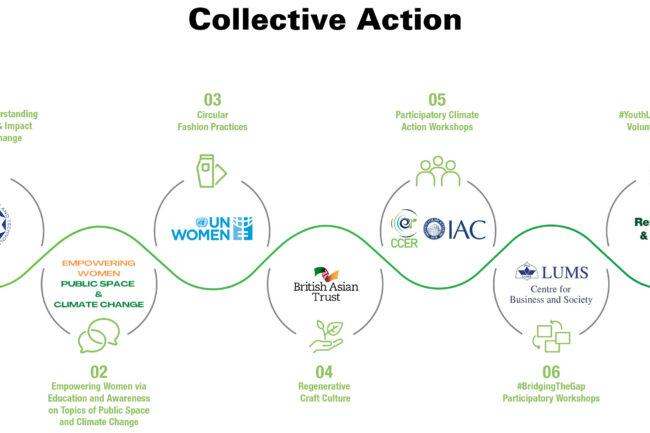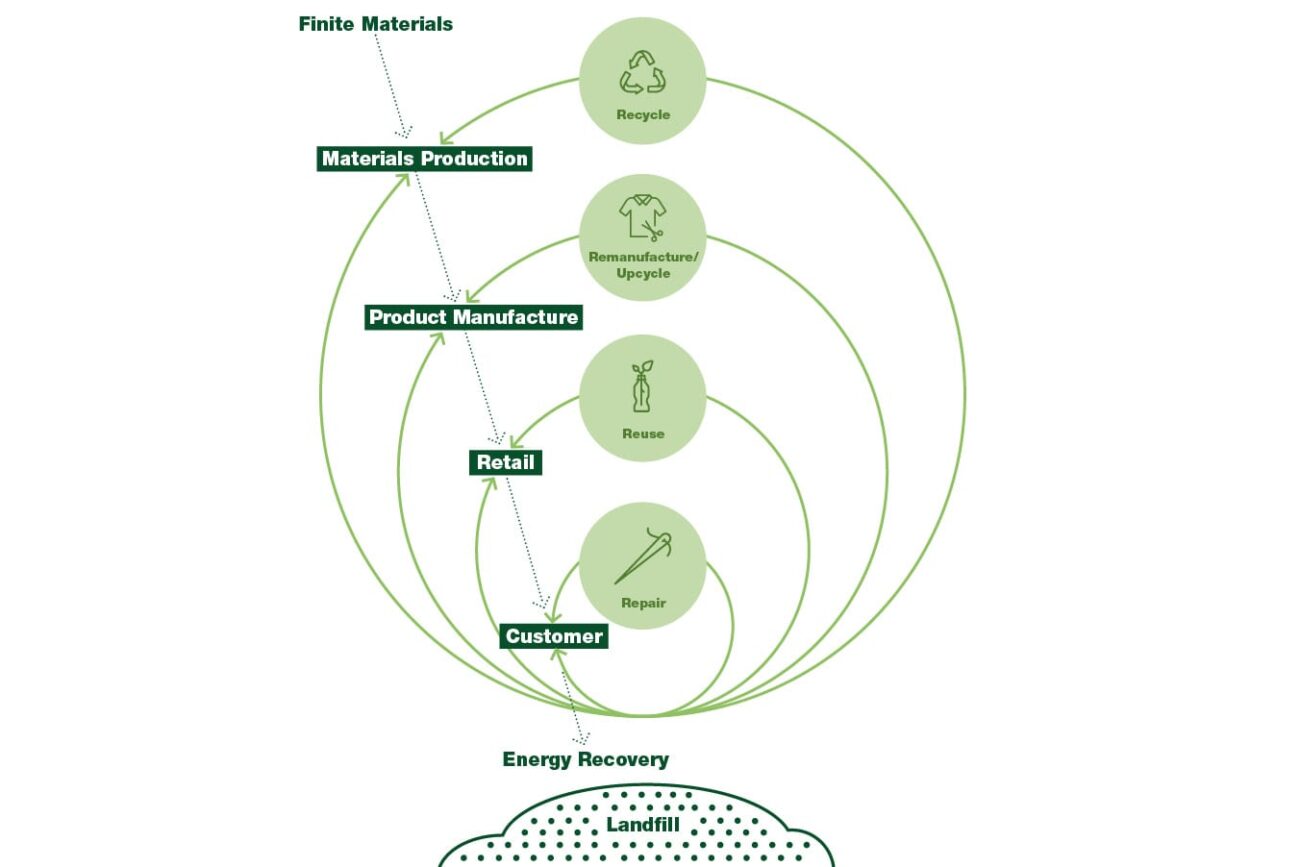Insight is the key to any solution
 To gain better insight, we humans must expand our horizons beyond the human lens by incorporating the views of animals, ecosystems, and artificial intelligence.
To gain better insight, we humans must expand our horizons beyond the human lens by incorporating the views of animals, ecosystems, and artificial intelligence.
Think globally, act locally! By integrating SDG 5: Gender Equality and SDG 12: Responsible Consumption and Production, Kaarvan has created a coalition with relevant institutions such as UN Women Pakistan, British Asian Trust, LUMS, UMT, IAC, CCER (Center for Climate and Environmental Research), Empowering Women, Public Space, and Climate Change—to address the complexity of climate change and its interconnections with rural women’s work, craft, and consumerism. Together, we are unlocking indigenous community practices, becoming more intentional about the consumption of resources, and creating new economic, environmental, and social models.
According to UN Women, the impact of crises is not gender-neutral. This has been brought into sharp focus by cascading crises, multiplying conflicts, and the accelerating impacts of climate change and environmental degradation, all of which have exacerbated the care demands on women and girls. Women and girls inevitably take on the bulk of care work when care demands increase and intensify and public and private systems and services are inadequate and underfunded to meet them.
To change the system, we must change the culture it thrives on. We must begin with ourselves. Individual actions on a collective scale. This revolution starts with thinking differently about the clothes we buy and wear.
This is where the importance of supporting local brands led by rural women entrepreneurs and their female members is crucial. We have to center the makers! It’s up to us to amplify, give money, time, and attention, and listen to and share the stories of artisan-entrepreneurs. Makers of hand embroidery products have very little power when it comes to competing with large brands. This is where we can step in: collective bargaining power is desperately needed. Buying directly from rural women entrepreneurs! We can invest in the local economy and environment.

Progress away from siloed approaches and towards integrated planning and implementation.
- Survey Developing Understanding On Perception and Impact Of Climate Change (with rural women artisan-entrepreneurs under the stewardship of UMT faculty and youth)
- Empowering Women, Public Space, and Climate Change: Working together on developing projects focused on further empowering women via education and awareness on topics of public space and climate change.
- Circular Fashion Practices with UN Women and Inditex (multinational clothing company), where 131 rural women artisan-entrepreneurs reinvent 3,275 unsold denim jeans
- Regenerative Craft Culture with British Asian Trust instills values of waste reduction through creativity and circularity
- Participatory Climate Action Workshops with CCER and rural women artisan-entrepreneurs
- #BridgingTheGap Participatory Workshops with LUMS CBS and rural women artisans and entrepreneurs
- Praxis of reflection and action blog write-up by Kaarvan Head of Communications. Mashal and youth volunteers engage in sensemaking and question hidden bias.

Tackling climate and SDG action together with a Center for Circular Design Framework that focuses on moving towards a future where textiles and materials are designed, produced, used, and recovered in radical new ways. This includes the creation of new economic, environmental, and social models.
Circular Design is a strategy that aims to use the planet’s finite resources in a more
sustainable way. In circular design, anything material is considered to be part of a loop or a system where recovery or future use is anticipated and enabled. The aim is to keep materials in circulation in perpetuity.
Circular resources are designed with recovery in mind or extracted from currently linear waste streams to retain their value in use.
Circular Material Flows: Anything that escapes an industrial cycle should aim not only to do no harm but to be an active nutrient in the system as a whole.
Circular Systems The ultimate aim is to eradicate waste altogether. When applied to textiles, a circular system achieves a more sustainable future for one of the world’s most impactful industries.
Let’s invest in creative solutions, waste-cutting skills and techniques, recycling innovation in production, and end-of-life disposal. Brands and consumers alike: we must discover ways to act on our surplus before it becomes waste.

